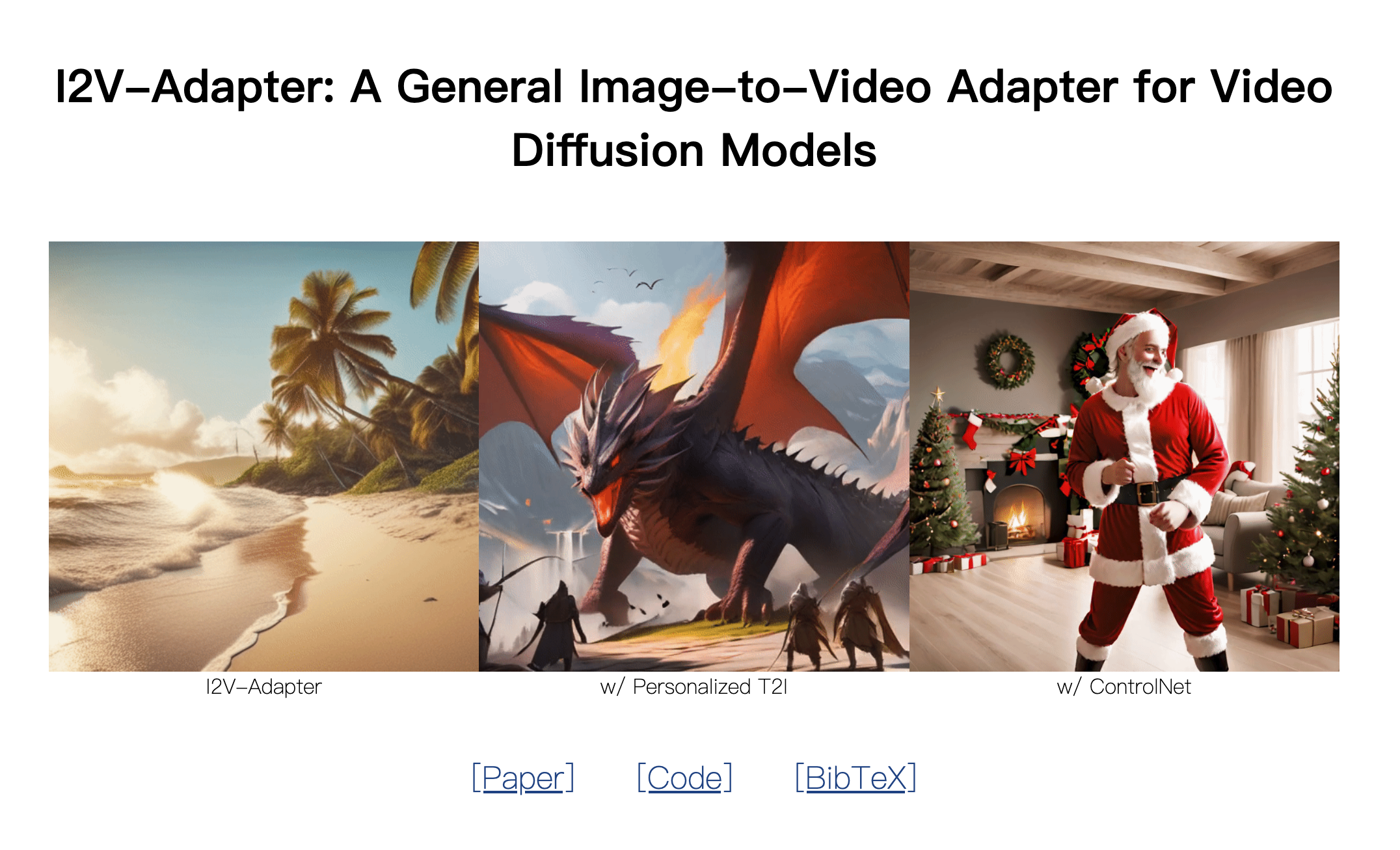

I2V Adapter
Overview :
I2V-Adapter aims to transform static images into dynamic, realistic video sequences while preserving the fidelity of the original image. It utilizes lightweight adapter modules to concurrently process noisy video frames and input images. This module acts as a bridge, effectively connecting the input to the model's self-attention mechanism, maintaining spatial details without modifying the T2I model's structure. I2V-Adapter boasts a reduced parameter count compared to traditional models and guarantees compatibility with existing T2I models and control tools. Experimental results demonstrate that I2V-Adapter can generate high-quality video outputs, holding significant implications for AI-driven video generation, particularly in creative applications.
Target Users :
Suitable for developers and creative professionals who need to convert images to video sequences.
Use Cases
Developers leverage I2V-Adapter to transform static images into dynamic video content.
Animators utilize I2V-Adapter to create realistic video sequences for animation segments.
Researchers explore new frontiers in AI-driven video generation using I2V-Adapter.
Features
Transforms static images into dynamic video sequences
Preserves the fidelity of the original image
Utilizes lightweight adapter modules for concurrent processing of images and videos
Maintains the model's self-attention mechanism and spatial details
Compatible with existing T2I models and control tools
Featured AI Tools

Sora
AI video generation
17.1M

Animate Anyone
Animate Anyone aims to generate character videos from static images driven by signals. Leveraging the power of diffusion models, we propose a novel framework tailored for character animation. To maintain consistency of complex appearance features present in the reference image, we design ReferenceNet to merge detailed features via spatial attention. To ensure controllability and continuity, we introduce an efficient pose guidance module to direct character movements and adopt an effective temporal modeling approach to ensure smooth cross-frame transitions between video frames. By extending the training data, our method can animate any character, achieving superior results in character animation compared to other image-to-video approaches. Moreover, we evaluate our method on benchmarks for fashion video and human dance synthesis, achieving state-of-the-art results.
AI video generation
11.5M














